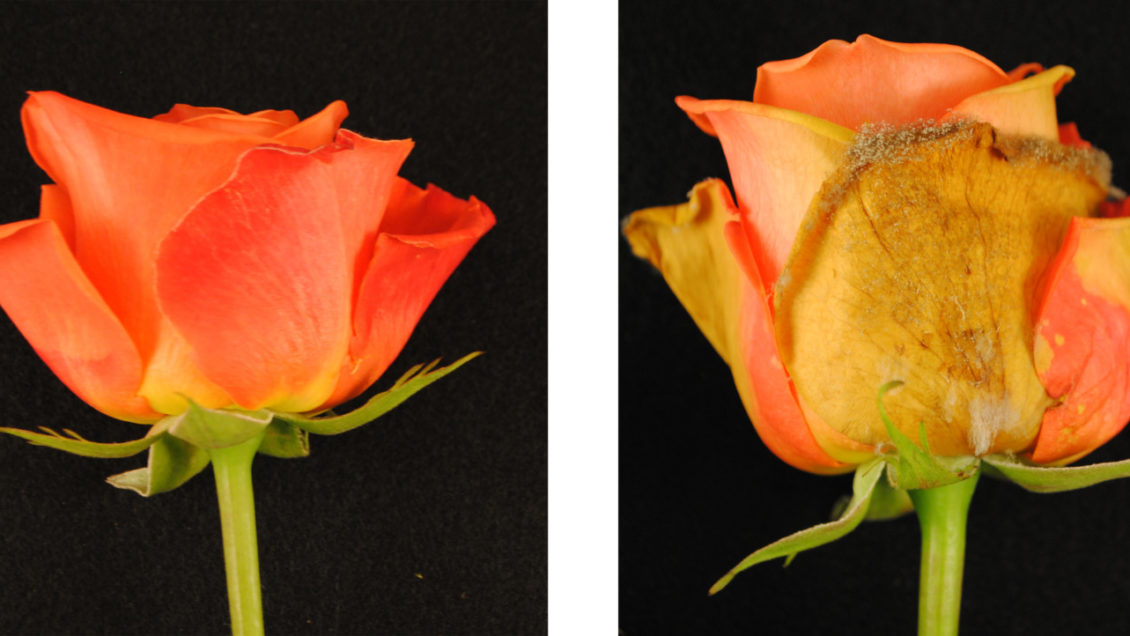“O my Luve is like a red, red rose
That’s newly sprung in June;
O my Luve is like the melody
That’s sweetly played in tune.”
CLEMSON – When Robert Burns wrote his iconic poem “A Red, Red Rose” in 1794, he couldn’t have imagined the industry that would become of growing, shipping, arranging and delivering the enduring symbols of love and beauty.
But if the bouquet of roses you receive on Valentine’s Day are infected with the common Botrytis fungus, you won’t be able to enjoy them very long. Petals of roses stricken by the Botrytis fungus turn brown or tan, making them less beautiful and marketable.
Clemson University researchers believe they have found a technique for extending the beauty of the bouquets.
A study led by Jim Faust, Guido Schnabel and Melissa Muñoz of the plant and environmental sciences department shows that dipping roses in calcium before shipping can lessen the chance the flowers contract Botrytis, an incurable fungus that is found almost everywhere plants are grown.
The calcium works in roses much as it does in humans. It binds with materials in plant cell walls making it more difficult for the fungus to penetrate and cause infections.
“Once Botrytis penetrates a plant’s cell walls, it removes the contents of the plant’s cells for its own growth and survival,” Faust said. “Building stronger cell walls helps prevent that.”
[vid origin=”youtube” vid_id=”0gbOPLXpMI8″ size=”medium” align=”left”]
The majority of 200 million roses Americans give on Valentine’s Day come from Colombia. About 48 hours pass from the time the roses are harvested, packaged and shipped, ample time for the fungus to infect a plant. It takes about 24 hours for the first Botrytis symptoms to begin showing in infected plants. However, sometimes the symptoms don’t show up until the temperature and humidity are optimal for the fungus to develop.
“This fungus is most active when temperatures are 62 to 72 degrees and conditions are moist, such as in greenhouses,” Faust said. “Several years ago, while working on another project, we found the leaf strength of poinsettias and geraniums improved when sprayed with calcium chloride.
“Then we decided to spray calcium on some petunia flowers that were being shipped. We found these petunias showed an increase tolerance to Botrytis infections. So we started this project to test the ability of calcium to reduce Botrytis infections on roses.”

The Botrytis rose test begins with roses harvested, processed and packaged in Colombia. Before they are shipped, they are dipped in a calcium solution. A control group is not dipped in the calcium solution. The roses are shipped to a lab at Clemson and placed in humid chambers to promote growth of any Botrytis spores that may be on the plants. The group found about a three-day delay of Botrytis infections on the roses dipped in calcium.
“Dipping the roses in the solution instead of spraying them, allows for all petals inside a rose to be treated,” Faust said.
The team’s research already is having an impact on the industry.
“Calcium dips have proven to be beneficial,” he said. “Some of the largest Colombian growers currently are using this dip for their roses, so the roses that you purchase for your sweetheart this Valentine’s may very well have been treated with calcium.”
The Faust and Schnabel lab is now beginning to test similar treatments on gerbera daisies, which also are very susceptible to Botrytis.
Thrips also are a major pest of cut flowers. J.C. Chong, Clemson Extension horticulture specialist housed at the Pee Dee Research and Education Center, has recently joined the cut flower research team to study thrips control.
END
This research is funded by the American Floral Endowment. The content is solely the responsibility of the authors and does not necessarily represent the official views of the American Floral Endowment.
Get in touch and we will connect you with the author or another expert.
Or email us at news@clemson.edu

